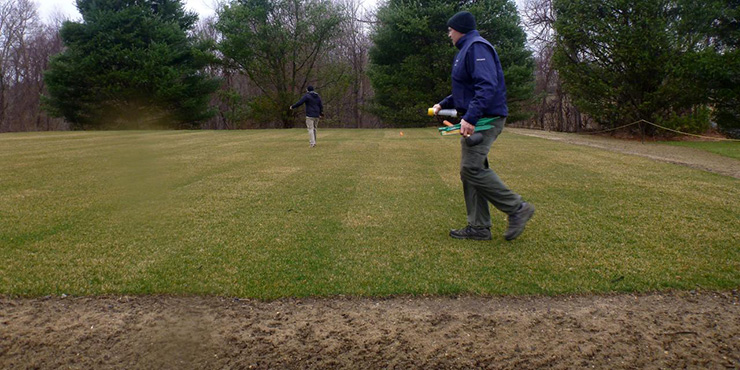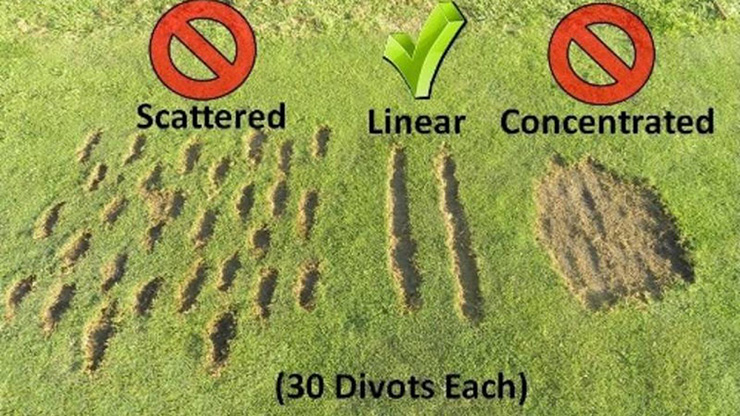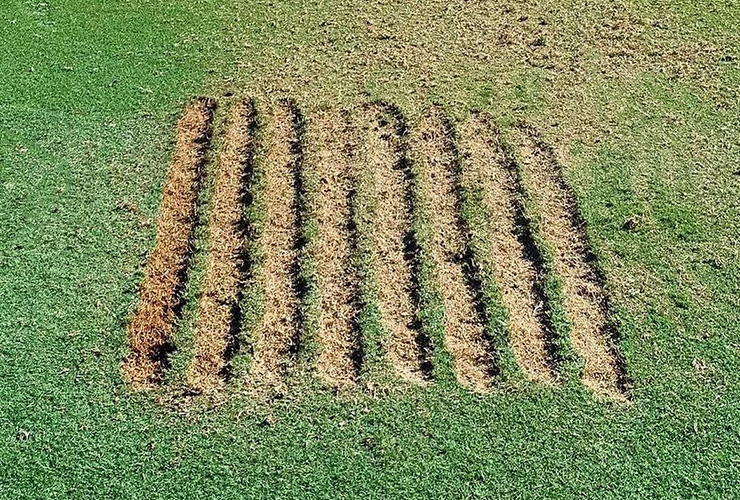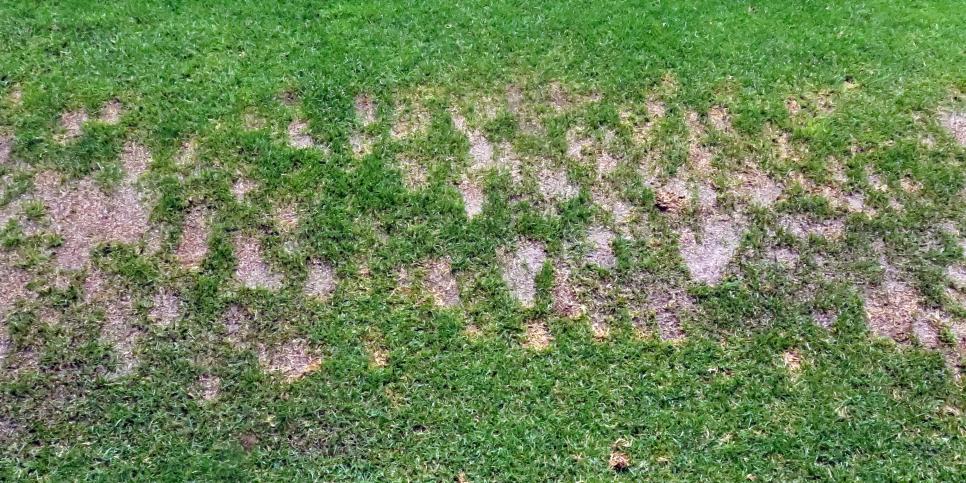By David Owen
My home course has a terrific practice area, which our greens crew has built and steadily improved over many years. Here are Corey (our pro, left) and Gary (our superintendent) last year, in the rain. They’re measuring yardages from various positions on the freshly re-graded and sodded teeing area, which is almost as big as our entire golf course:

I never practice, but other people do, and recently Gary reported that repairing the damage they do to the range was becoming more time-consuming than taking care of our fairways and greens. The main problem is lazy divot-taking. People see all those acres of brand-new sod and can’t resist chopping it to smithereens:

The problem is that they don’t know the proper way to take divots on a driving range: in neat lines separated by bands of intact turf, as in this diagram from the USGA:

Here’s the USGA’s explanation:
A scattered divot pattern removes the most amount of turf because a full divot is removed with every swing. Scattering divots results in the most turf loss and uses up the largest area of a tee stall. This forces the golf facility to rotate tee stalls most frequently and often results in an inefficient use of the tee.
A concentrated divot pattern removes all turf in a given area. While this approach does not necessarily result in a full-sized divot removed with every swing, by creating a large void in the turf canopy there is little opportunity for timely turf recovery.

The linear divot pattern involves placing each shot directly behind the previous divot. In so doing, a linear pattern is created and only a small amount of turf is removed with each swing. This can usually be done for 15 to 20 shots before moving sideways to create a new line of divots. So long as a minimum of 4 inches of live turf is preserved between strips of divots, the turf will recover quickly. Because this divot pattern removes the least amount of turf and promotes quick recovery, it is the preferred method.
Thoughtful golfers know how to do it the right way. Here’s Todd, who probably practices more than any other member of our club but does way less damage than guys who just slash their way through a quick half-bucket before heading to the first tee, because he takes his divots in neat lines, the way the USGA recommends.









